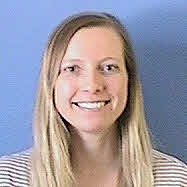Resident Supervision
The Residency Supervision Area is designed to assist hospitals and clinics with the protocols outlined for specific duties residents and fellows can perform. These guidelines are determined by the faculty of the University of Tennessee Health Science Center. Any questions about certain procedures not listed should be addressed to the faculty and not decided by the resident or fellow.
A credentialed and privileged attending physician ultimately provides supervision or oversight of each resident's patient care activities. Direct supervision by a qualified attending physician is required in the OR/Delivery Room or for non-routine invasive procedures like Cardiac Cath, Endoscopy, and Interventional Radiology. The standards for resident supervision in patient care settings are described in GME Policy #410.

Hawthorne, Chelsea - PGY - 6
Department of Pediatrics-Emergency Medicine
Resident Supervision
|
|
PGY4 |
PGY5 |
PGY6 |
|
Differential Diagnosis: |
|||
|
Clinical History |
X |
X |
X |
|
Physical Examination |
X |
X |
X |
|
Interpretation of Laboratory Studies |
X |
X |
X |
|
Interpretation of Plain Radiographs (Skull, Spine, Chest, Abdomen, Extremities) |
X |
X |
X |
|
Cardiopulmonary Resuscitation: |
|||
|
Pediatric Medical Resuscitation <2 years |
X |
X |
X |
|
Pediatric Medical Resuscitation >2 years |
X |
X |
X |
|
Pediatric Trauma Resuscitation <2 years |
X |
X |
X |
|
Pediatric Trauma Resuscitation >2 years |
X |
X |
X |
|
Adult Medical Resuscitation >18 years |
X |
X |
X |
|
Adult trauma Resuscitation >18 years |
X |
X |
X |
|
Airway Maintenance |
X |
X |
X |
|
Emergency Drug Therapy |
X |
X |
X |
|
Rhythm Strip Interpretation |
X |
X |
X |
|
Emergency Vascular Access |
X |
X |
X |
|
Closed Chest Compressions |
X |
X |
X |
|
Cardioversion & Defibrillation |
X |
X |
X |
|
Airway Maintenance: |
|||
|
Bag-Valve-Mask Ventilation |
X |
X |
X |
|
Insertion of Oral Pharyngeal Airway |
X |
X |
X |
|
Endotracheal Intubation/Rapid Sequence Intubation |
X |
X |
X |
|
Cricothyroidotomy-Translaryngeal Ventilation |
X |
X |
X |
|
Tracheostomy Tube Replacement |
X |
X |
X |
|
Use of Mechanical Respirators |
X |
X |
X |
|
Vascular Puncture & Access: |
|||
|
Central Venous Catheterization |
X |
X |
X |
|
Intraosseous Access |
X |
X |
X |
|
Peripheral Venous Catheterization |
X |
X |
X |
|
Arterial Puncture or Catheterization |
X |
X |
X |
|
Umbilical Vessel Catheterization |
X |
X |
X |
|
Additional Specific Skills: |
|||
|
Tube Thoracostomy |
X |
X |
X |
|
Pericardiocentesis |
X |
X |
X |
|
Use of Water Seal Drainage Devices |
X |
X |
X |
|
Emergency Closed Fracture Reduction/Splinting |
X |
X |
X |
|
Closed Dislocation Reduction |
X |
X |
X |
|
Bladder Catheterization |
X |
X |
X |
|
Suprapubic Bladder Puncture |
X |
X |
X |
|
Laceration Repair |
X |
X |
X |
|
Regional Blocks |
X |
X |
X |
|
Foreign Body Removal Techniques |
X |
X |
X |
|
Splinting of Fractures & Dislocations |
X |
X |
X |
|
Incision & Drainage of Superficial Abscesses & Hematomas |
X |
X |
X |
|
Interpreting Arterial Blood Gases |
X |
X |
X |
|
Conversion of Supraventricular Tachycardia |
X |
X |
X |
|
External Cardiac Pacing |
X |
X |
X |
|
Emergency Treatment of 1st, 2nd & 3rd Degree Burns |
X |
X |
X |
|
Emergency Vaginal Delivery |
X |
X |
X |
|
Gastric Intubation (Nasal & Oral) |
X |
X |
X |
|
Diagnostic Peritoneal Lavage |
X |
X |
X |
|
Nasal Packing |
X |
X |
X |
|
Slit Lamp Examination |
X |
X |
X |
|
All other procedures are performed under direct supervision of a faculty member. |
|||
